Introduction
Healing is urgently needed in 2021 due to social disruption. In search of a comfortable local district in the metropolis, Tai Hang would come first in many citizens’ minds because of her uniqueness in the town. It is a small and quiet neighbourhood, surrounded by the most iconic landmarks and the busiest districts, chic restaurants and historical traces. These are the reasons why an outsider would visit. It is also a vibrant neighbourhood with a UNESCO intangible cultural heritage – the Fire Dragon Festival. The festival brings Tai Hang residents together as a community. At the end of the main street here – Wun Sha Street, only the more discerning eyes would know of a cul-de-sac with 2 old, 1950s buildings at the crescent-shaped hillside. Not to mention, there are more forgotten identities at this cul-de-sac waiting to be rediscovered…
”A dead end, also known as a cul-de-sac, no through road or no exit road, is a street with only one inlet or outlet.”
Hope
In Hong Kong, the underused cul-de-sac in Tai Hang used to be an uncovered laundry place due to its terrain advantage. Rain water flows from the upper Tai Hang towards the site, so people made use of the water for the laundry industry. This water brought different people along the Nullah into a whole in the past. It is a pity that the government covered up the Nullah due to hygiene issues in the 1960s. Can the people become one again if we bring the water back, aided by present technologies and values?
There are 2 parts to this thesis project: Architecture & Urban Design. With regards to architecture, the cul-de-sac is changed into the central hub of the neighbourhood by adding new buildings that connects to both upper and lower Tai Hang. With the conservation of the 2 modernist buildings at the cul-de-sac, connections are made between the two and to the spaces in the vicinity, creating open-minded spaces for more positive interactions. And now, the water comes in as an urban connector. For urban design, connecting the whole community is the main mission. With filtration plants in the new architecture, clean water flows into the swimming pool and foot spa, and unfiltered water from another water source goes into the urban farm. The water downstream then flows into the new returning Nullah at Wun Sha Street. With a continuous line of activities along the water, the already lively main street merges with the new community hub at the end of the street.
Conclusion
The existing community spirit in the Fire Dragon Festival is brought out with the new community-approach to architecture and urban design, seeking to lighten up the cul-de-sac. The fire dragon now truly glows. By turning an end point into a new center, and bringing back the forgotten, we may now rediscover love and lost values by recapturing the everyday and identity in Tai Hang.
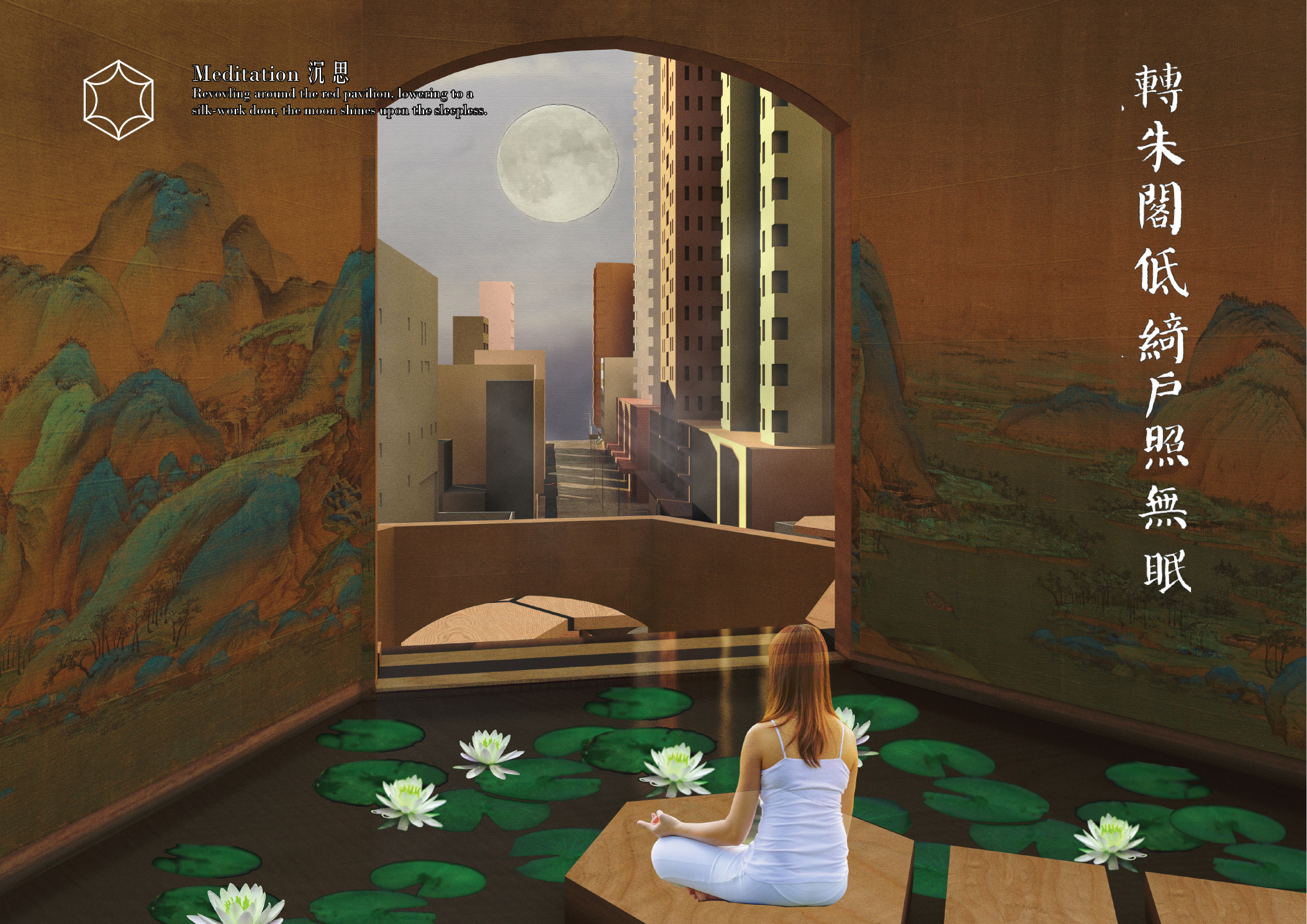
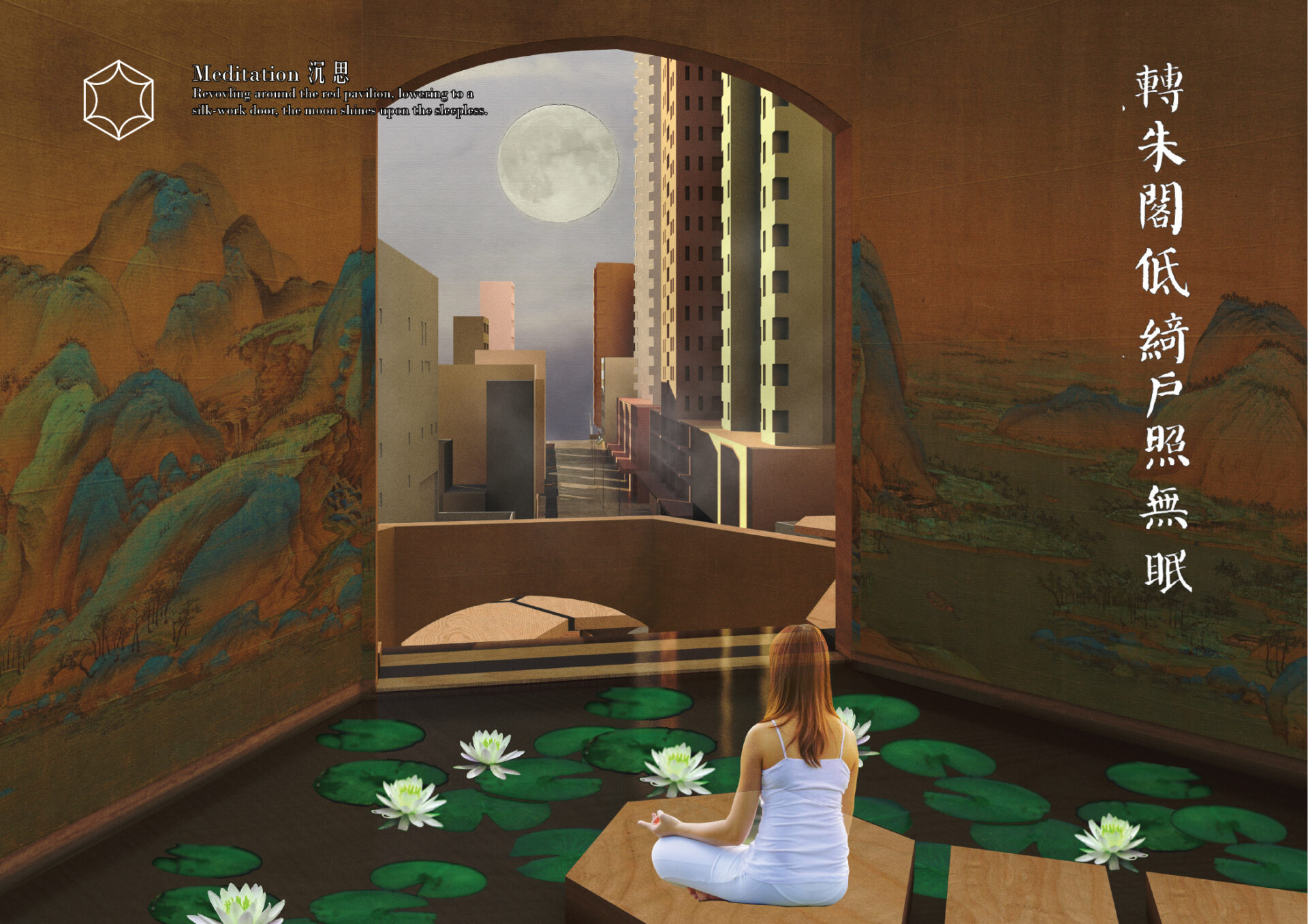

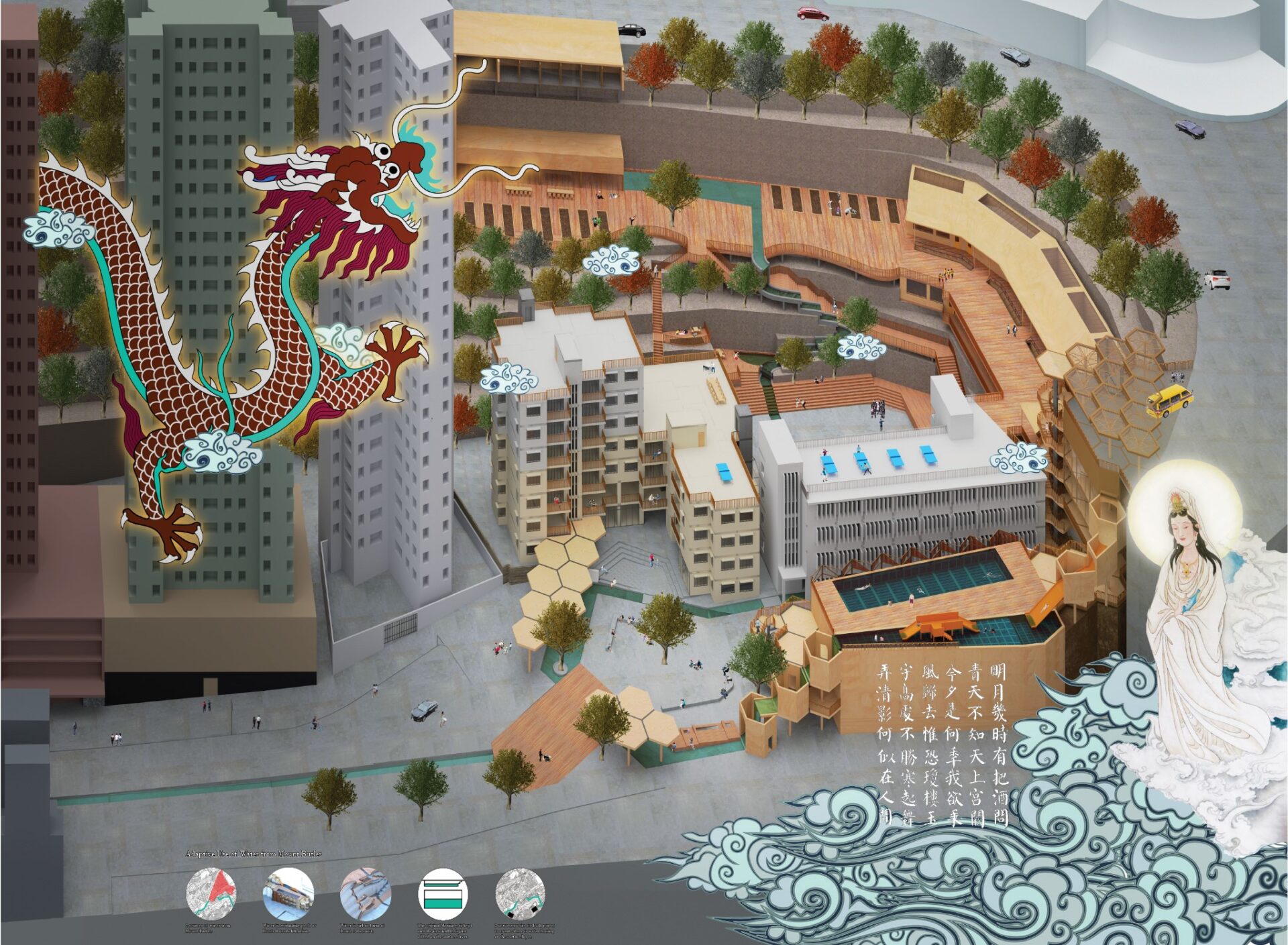
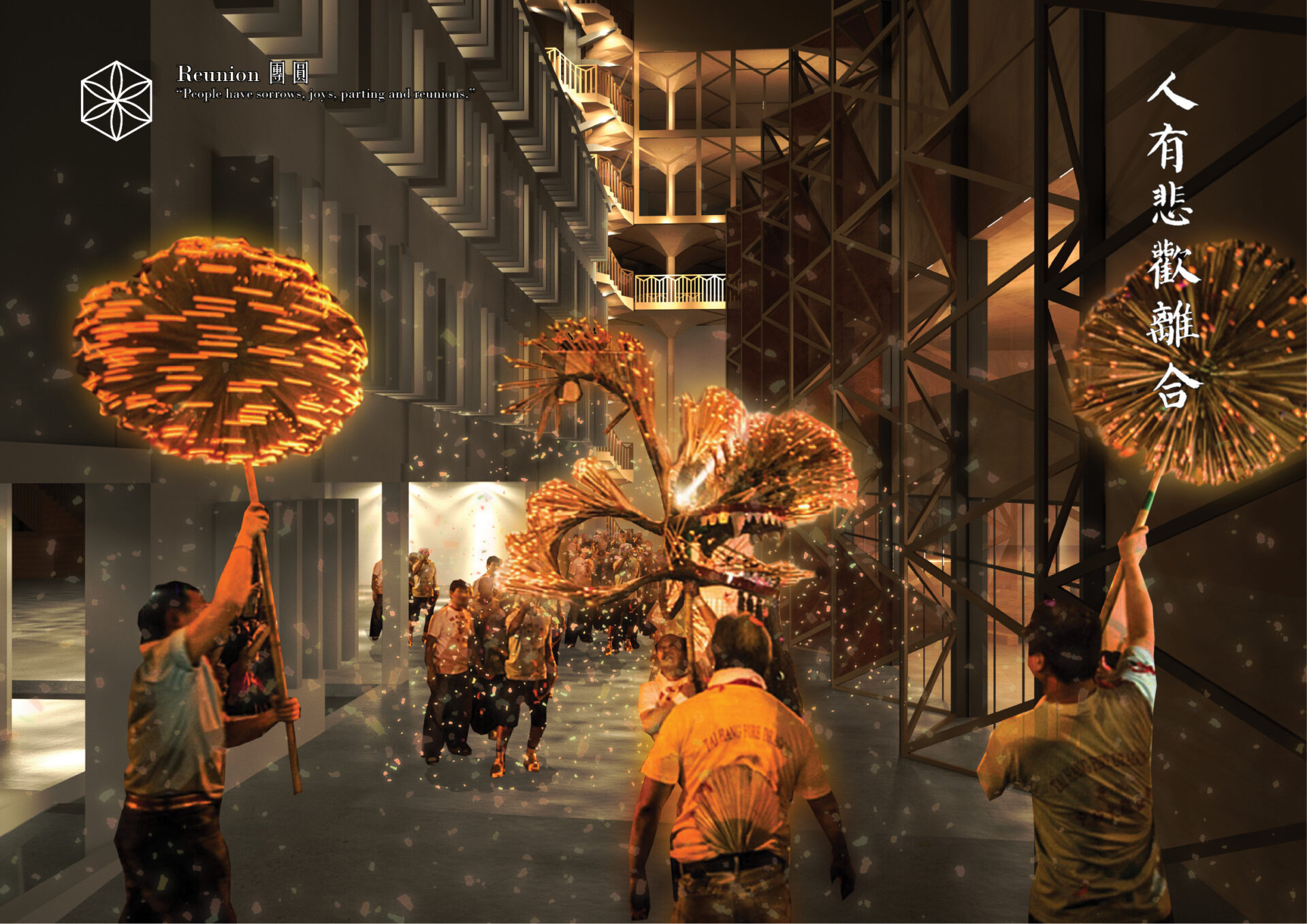
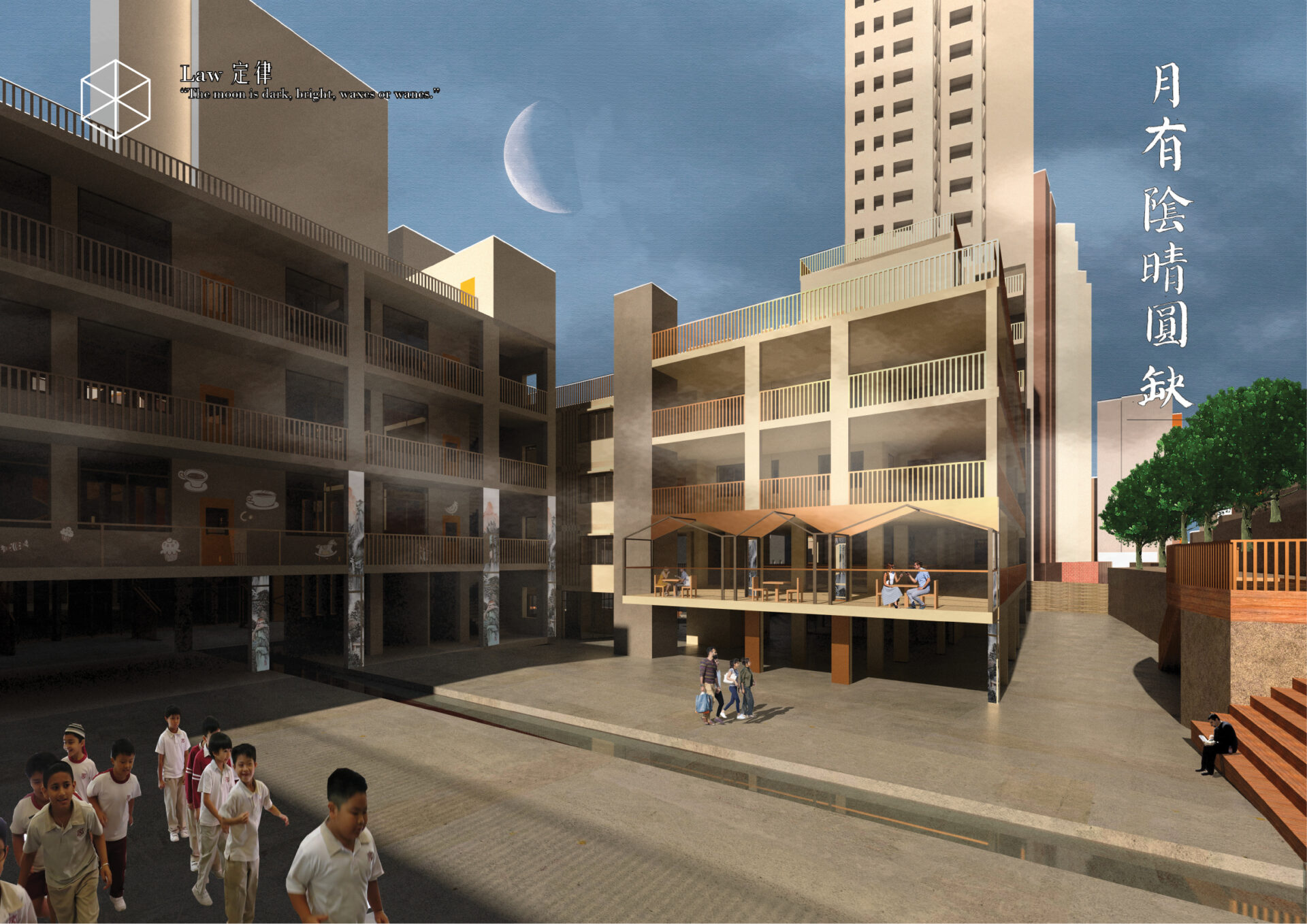
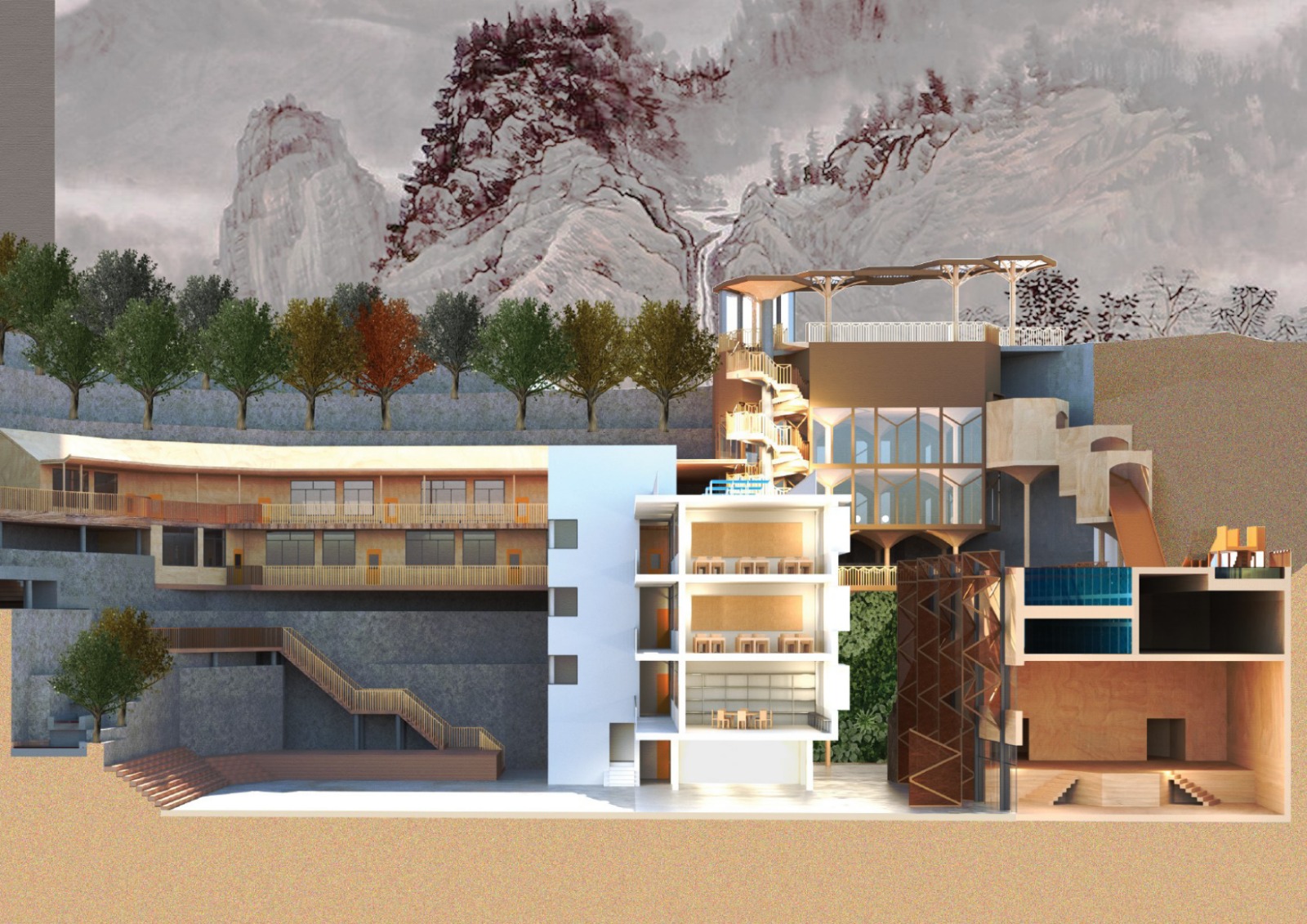
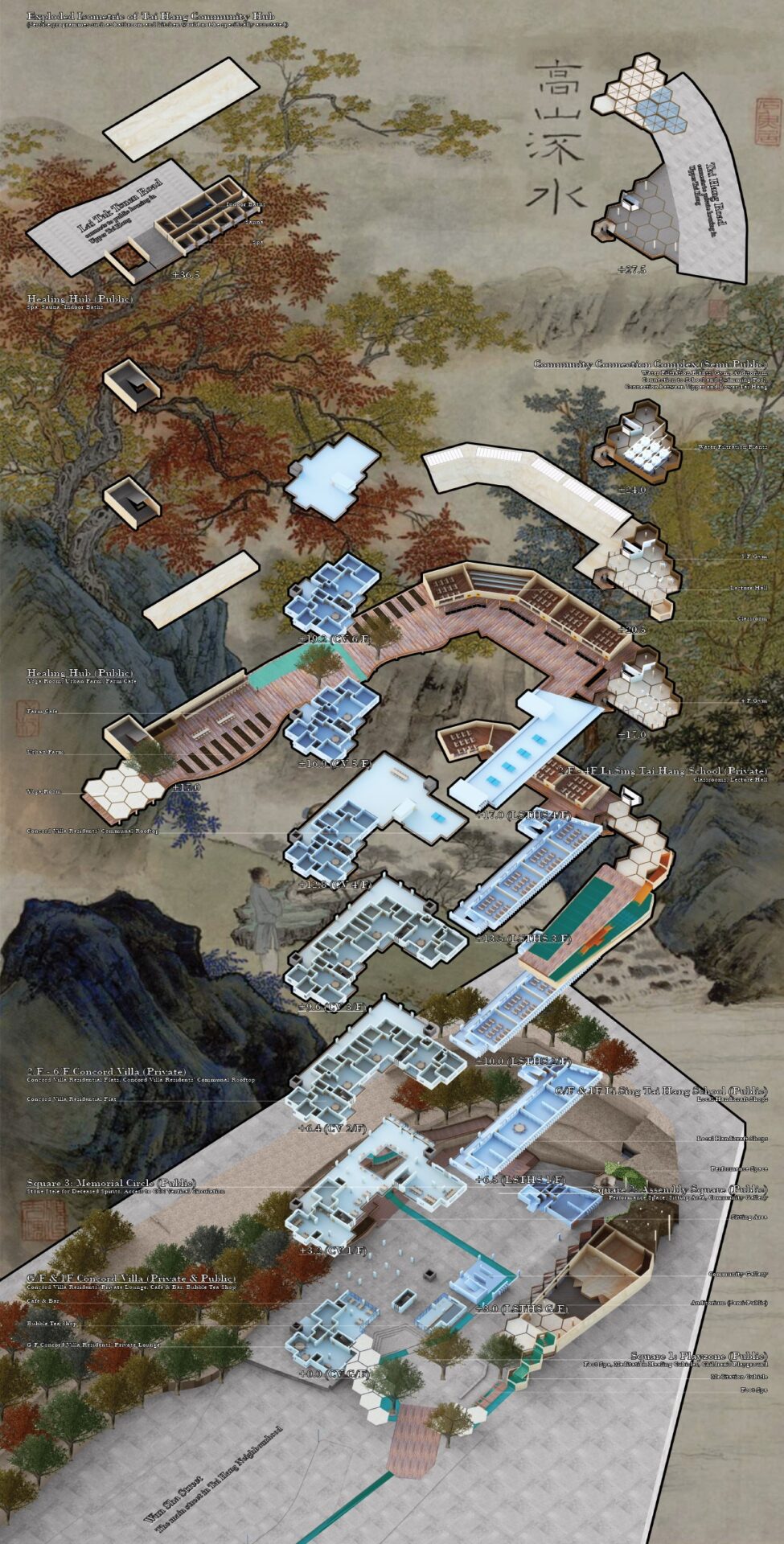
Supervisor's comments:
Nestled in a historic neighbourhood of Hong Kong, the project focuses on the history, memory, ritual, geography and wellness of the urban space and the community of Tai Hang. These many layers of concerns are overlaid with a proposed multi-functional complex that responded to multivalent design objectives. The strategy to adaptive reuse historic buildings on site is commendable and well executed. The original left-over cul-de-sac in Tai Hang can be fully revitalized through this proposal and integrated with both the vibrant urban village and the quiet residential district in upper Tai Hang. It will also provide the space and meaning to the fire dragon procession happening on Mid-Autumn festival that is an international heritage event. The scheme can be further improved with better integration of new building design and the historic structures and the hilly terrain.
- Prof. Ho Puay Peng (Dr.)